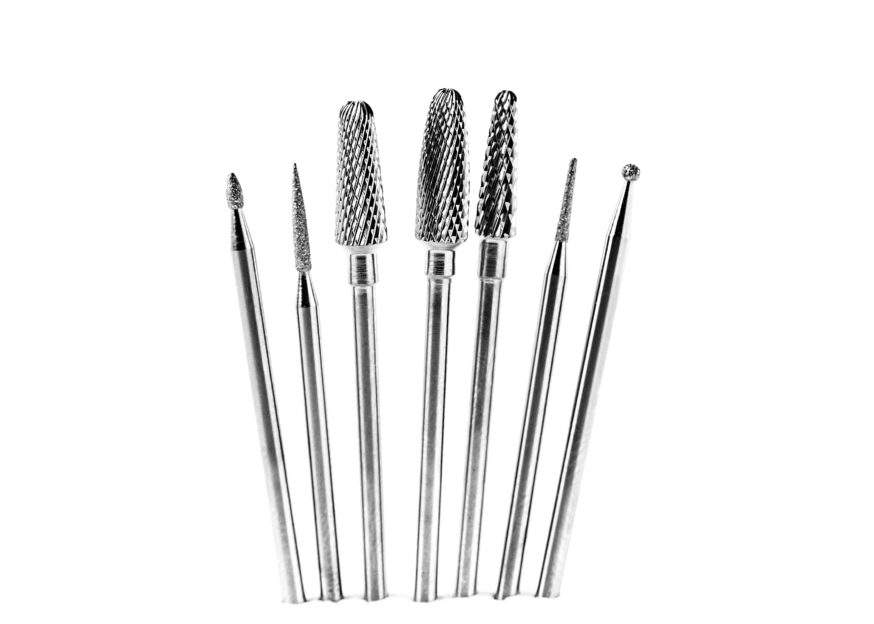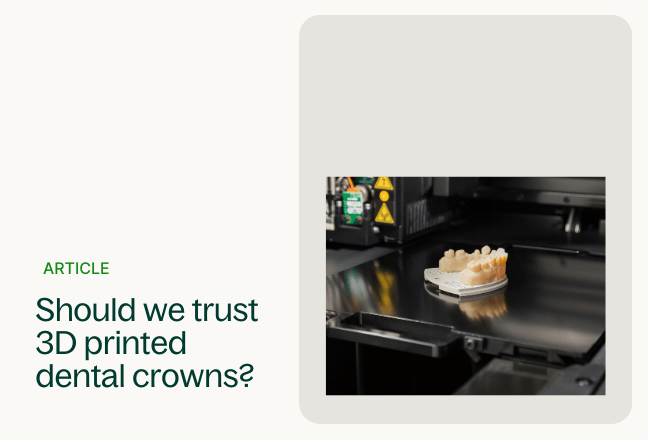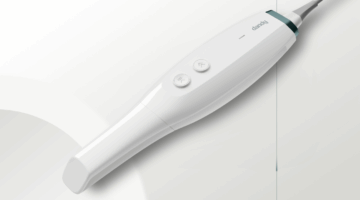Amidst the array of dental tools, burs emerge as a quiet yet primary companion to most dental practices because they help achieve and execute intricate procedures accurately. We’ll walk you through the significance and diversity of burs and every detail you need to know about these tiny yet powerful tools that contribute to optimal patient outcomes and long-term oral health. Ultimately you, the dentist, are wielding the tool so it is imperative that you choose the right bur for the technique.
Dental burs are useful tools in preparing for most dental procedures, such as removing dental caries, old dental restorations, excess dental materials during restoration, etc. They are small attachments used with a dental handpiece for cutting, shaping, or removing dental hard tissues—tooth or bone.
Burs date back to ancient civilizations when dental materials were made of bone or animal teeth. Early metal instruments, like bronze and iron, were often used for teeth extraction and other basic dental procedures. This laid the foundation for the development of metal burs.
Backed by technological progress and the need for precision, materials that exhibited exceptional hardness and durability came to light in the mid-20th century. The materials were made of tungsten carbide, and they significantly enhanced the efficiency and effectiveness of most procedures. Subsequently, other innovations emerged, further enhancing cutting efficiency. Today, burs are fashioned in purposeful shapes and from the varied materials necessary to meet the specific needs of tooth preparation, restoration (direct or indirect), and oral surgery.
Burs are a key tool in dentists shaping and adapting restorative material directly into the patient’s mouth. These restorations are typically done to repair minor to moderate tooth damage, such as cavities or small fractures. During this method of restoration, dental burs are used to:
- Remove decayed or damaged tooth structures while preparing cavities for direct restorative materials, such as dental amalgam or composite resin. They shape and contour the tooth to ensure proper retention and adaptation of direct materials.
- Prepare tooth surfaces for applying pit and fissure sealants, which are thin, protective coatings applied to the chewing surfaces of molars and premolars to prevent the accumulation of plaque and bacteria in the deep grooves. This provides a protective barrier against decay.
- Prepare and shape tooth surfaces for dental bonding, such as zirconia crowns, to facilitate the adhesion and application of the bonding material.
- Prepare the tooth for repair or replacement by removing or modifying defective or damaged direct restorations.
Conversely, indirect restorations are carried outside the patient’s mouth— typically in a dental laboratory—and bonded to the tooth during subsequent appointments. The process involves taking impressions or digital scans of the prepared tooth, which are used to create a custom-fitted restoration. Dental burs for this restoration method are mostly used to:
- Shape the teeth in preparation to receive crowns or bridges. They help reduce the tooth’s structure and, in turn, create space for indirect restoration.
- Prepare cavities for the placement of inlays and onlays, which are custom-made to fit into a prepared tooth cavity (inlay) or cover a portion of the tooth’s surface (onlay) to restore its function and appearance.
- Prepare the teeth for veneers, which are thin shells of material (usually porcelain) bonded to the front surfaces of teeth for cosmetic purposes.
- Access and shape the root canals during the preparation of teeth for root canal therapy.
- Prepare the bone and surrounding tissues for the placement of dental implants.
- Adjust the gum tissue and bone level, exposing more of the tooth structure for proper restoration.
- Removal of temporary crowns or bridges to facilitate the placement of permanent restorations.
It’s up to the dentist to choose which bur to use for their procedures. Make sure you’re making the best decision for your next case.
The 5 major bur head shapes
There are various types of bur head shapes in dentistry the most-ubiquitous being: round, pear, cross-cut tapered fissure, cylinder, and inverted cone. Each shape determines the efficiency and precision of several dental procedures and influences dental tissue cutting, shaping, and removal. Which shape is best for which use?
Round
Round heads are used for cavity preparation, creating access points for endodontic treatment, cleaning the tooth structure from caries, and selective grinding. Round heads are also used for bone surgery.
Pear
Pear-shaped heads are used for cavity preparation, access points, and splitting roots of small teeth. They are also known as 330 burs due to their ISO (International Organization for Standardization) code, a standardized classification system indicating specific dimensions and characteristics for these dental cutting tools. They can also be used for removing caries, as well as trimming and finishing.
Cross-cut tapered fissure
Cross-cut tapered heads come in both short and long shanks, making them suitable for many cavity preparations. They are ideal for various actions during crown removal and are used for sectioning multi-rooted teeth and reducing crown height. They have a low tendency to create undesired tissue residue.
Cylinder
Cylinder-shaped heads usually have a flat or slightly rounded end, especially used for initial tooth preparation and creating straight-line access in dental procedures. They are designed to make the task of crown and bridge preparation simpler and more efficient.
Inverted cone
Inverted cone heads usually come in a variety of lengths and grits and are used in dental surgery to create undercuts for restorations or root canals. They can also be used for the removal of caries.
Dental burs: material vs shape
The material and shape of dental burs are critical factors dentists consider when selecting the appropriate tool for a specific dental procedure. Different materials, such as carbides or diamonds, offer different hardness and wear resistance, influencing the bur’s durability and cutting capabilities. At the same time, the shapes provide specific cutting profiles and angles, allowing you to tailor their use for tasks precisely, especially tooth preparation, restoration, or contouring.
The materials and shape selection of dental burs are intuitive in determining their cutting precision and suitability for various dental procedures. For instance, harder materials like carbide are often used for shaping teeth, while bur shapes (for example, round, pear, and cross-cut tapered) allow for specific applications such as cavity preparation, contouring, or finishing. This promotes efficiency and optimal performance. The combination of both materials and shapes permits versatility and accommodates the specific needs of each treatment.
Carbide burs
Carbide burs are made from a compound of tungsten and carbon, known as tungsten carbide. This is why they are known for their hardness, rigidity, and durability.
They are used for many procedures, including cavity preparation, dental decay removal, teeth preparation for restorations, and shaping and contouring dental materials. Due to their precise cutting capabilities, they are often employed in implant overdenture procedures to shape the surrounding bone efficiently, ensuring a perfect fit and stability.
They can generate heat during use, which may be a concern in procedures where excessive heat can damage the tooth pulp. Prolonged use of carbide burs may also cause vibration, making patients uncomfortable.
Diamond burs
Diamond-coated burs are coated with industrial-grade diamonds. They are exceptionally hard and suitable for cutting through hard substances like enamel and dentin. They are often used in procedures requiring precision, such as zirconia crown preparation and veneer installation. Due to their high precision, they are suitable for fine detailing, shaping, and contouring.
Like carbide burs, they tend to generate heat during use, and caution should be taken to avoid overheating the tooth. They are more expensive compared to other materials, making them less desirable for routine procedures. They are not very sustainable, as the diamonds on the bur can wear down over time, affecting their cutting efficiency, and they may need more frequent replacement.
Steel burs
Steel burs are typically made from stainless steel, a corrosion-resistant alloy of iron, chromium, and nickel. They are often used for trimming and finishing dental restorations, polishing dental materials and surfaces, and sometimes initial tooth reduction. Please do keep in mind that carbide burs are more commonly employed for this purpose.
Compared to other materials, steel burs may have lower durability, making them less suitable for extensive tooth reduction. They may not cut as efficiently as carbide burs, especially in harder materials.
Ceramic burs
Ceramic burs are made from zirconia, aluminum oxide, or similar ceramic materials, known for their hardness, durability, and resistance to wear. They are excellent for finishing and polishing dental restorations due to their fine, abrasive nature. They can be used for some soft tissue procedures because they offer precision and cause minimal trauma, making them great for dental surgery.
They do not heat up as easily as most other dental burs because of ceramic’s low heat conduction properties. Therefore, they are most suitable for use when cutting bone in a dental implant surgery. However, they can be brittle, and excessive lateral pressure may lead to chipping or breakage. They may be less efficient than diamond or carbide burs in cutting through harder materials. They can be relatively more expensive than other types, impacting their cost-effectiveness.
Overal it’s important for you to consider these factors and choose the appropriate type of bur based on the specific requirements of each dental procedure and your patient’s needs.
Dental bur uses, shapes, and materials
Selecting the right type of bur can help you create a better patient experience. When it comes to gingival retraction techniques, prepping for crown and bridge restorations, making adjustments on partial dentures, or fitting and adjusting Clear Aligners, the right bur can help create a more comfortable patient experience.




